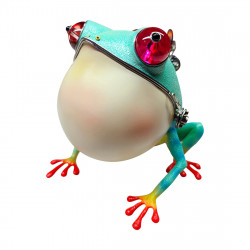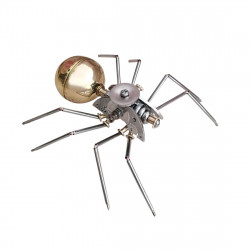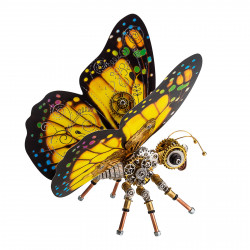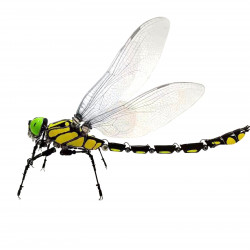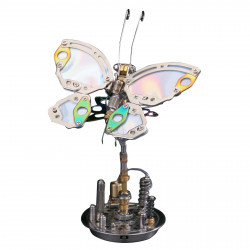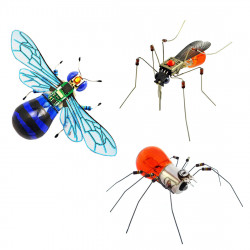All You Should Know BEFORE Getting A Pet Tarantula Spider

All You Should Know BEFORE Getting A Pet Tarantula Spider
Tarantulas have become one of the most popular pets in recent years. They are distinct and silent, need little room to move around, and are reasonably simple to care for. In addition to being cool and having a wonderful personality, tarantulas are quiet, entertaining, and low-care pets that don't take up much room. It might be very intimate to have tarantulas as pets. However, because tarantula bites are lethal, they are not the best option if you are an animal lover who enjoys direct contact with your pets.
What special features does a tarantula have?
Tarantulas are members of the spider family. Of the approximately 850 tarantula species found worldwide, 500 are indigenous to the American continent, and 460 are bristle-bearing. Tarantulas have eight eyes and wolf-like fur on their backs. A giant tarantula can poison a person; some are so toxic that they can poison a sparrow—three columns of eight black eyeballs. The legs have three claws at the end and are robust and spiky. Renowned for their agility, ferocity, running prowess, and jumping skills. Around 1500 species globally. Small and medium body length, 3–25 mm. Ground, ridge, ditch, farming, and plant activity. Some species reside in caves, while others hide in dirt crevices or beneath rocks. They typically emerge to eat during the day, though in warmer climates, they may do so at night as well. The legs of a tarantula usually are 5 to 8 inches long. Generally speaking, females are bigger than males. It's
Because they hide in the gravel and are extremely watchful, tarantulas are also hard to find. Most holes are lined with silk pipes and bored into the ground. Some construct a tower-like structure over the pit, while others conceal the hole's entrance with garbage. Net-weaving is rare among species. The tarantula's hissing resembles tearing silk when it rubs its first set of legs, which it uses for walking, and the front of its head, which it uses to grasp prey. The most effective way that tarantulas have evolved is through their low, dog-like bark, which serves as a deterrent to enemies.
In the Old World, tarantulas are violent and frequently devour their kind, but they also tend to be affectionate toward their offspring. The majority of tarantulas raise their young well. Mother tarantulas frequently go without food and starve to keep their offspring full. Female tarantulas often have severe anorexia and steadily lose weight after giving birth, and they don't begin feeding heavily until the young are older.
Some Tarantula Behaviors You Should Know
In general, tarantulas are solitary creatures. Cleaning frequently is not advised unless necessary. One example is taking the spider out of its shell to clean it. In this instance, luring the spider into a tiny container for transportation is preferable to moving it in your hands.
Some people let their tarantulas walk on their bodies because they are generally docile. On the other hand, tarantulas are venomous and will bite if they feel threatened. The tiny, spiky hairs on the abdomen of tarantulas can cause skin discomfort, which is another issue. Spiders release these hairs when they feel threatened, irritating and itching skin.
Because of their small size, tarantulas are relatively easy to maintain, even though their defence mechanisms make their general care considerably more difficult. You should budget a few hours each week for cleaning and feeding. After that, you can take pleasure in seeing this unusual animal. Hunting live prey is typically when tarantulas are most active. Otherwise, it usually remains still.
Are Tarantulas Harmful to Humans?
Tarantulas indeed bite, and their bites are poisonous. The venom of tarantulas is equally toxic to most species as the sting of a bee or wasp. A spider bite typically results in localized discomfort, edema, and redness. However, some spider bite victims suffer from the same allergies or anaphylaxis that bee bite victims do, and these reactions can be lethal. Furthermore, certain spiders have extremely potent venom, which can kill the victim or cause severe poisoning. Don't get bitten, even if your spider isn't deadly. The ideal approach is learning about spider behaviour, personality, and proper feeding techniques. Because they are wild creatures, tarantulas should be treated with respect. Most spiders, however, will prefer to avoid rather than attack according to the law of nature.
The fact that these tarantulas have irritating hairs on their abdomens should also be considered when caring for them. They touch their abdomens to remove the itchy hairs when they feel threatened. Because of how easily these microscopic hairs can penetrate the skin, the victim may experience irritation and itching. These microscopic hairs can readily penetrate the eye and induce inflammation if they do so. Therefore, it's crucial to avoid letting eyes near this hair. Avoid rubbing your eyes until you have washed your hands after coming into contact with spiders or spider cages. Don't examine the spider too closely, though. If you unintentionally touch a few tiny hairs on your hands, try using tape to remove the surface hairs before washing them with water. Additionally, keep tarantulas out of children's and other pets' reach.
The Ultimate Guide To Breed Pet Tarantulas
1) How to Care for a Pet Tarantula?
Spiders eat various foods, are resilient to hunger, have high vitality, and use straightforward feeding techniques. They can grow and develop regularly, spin silk, and procreate as long as the three fundamental requirements of food, water, and concealment are met.
Since they are not sociable creatures, spiders are typically confined in cages. Because they can be escape artists, they require a secure cover with mesh fencing and ventilation to protect their confinement. The basic rule of thumb for terrestrial tarantulas is that the enclosure should be roughly three times as long as the spider's leg spread, twice as wide, and slightly higher than the spider's leg span. Generally speaking, a 20-litre tank is ideal. A larger crate isn't always preferable because it makes the prey more challenging to locate. Additionally, select enclosures with legs twice as wide and three times as long for arboreal species. With some branches that can be used for netting, the height should be around 30 cm.
A hiding spot is also necessary for your tarantula. Good options are half a clay pot on the side, half a hollow log (typically found at pet stores), or a piece of cork bark. Tarantulas should not be exposed to direct sunlight and do not require high lighting.
2) What can a tarantula eat?
Add mealworms, super worms, and cockroaches to your tarantulas' diet in addition to crickets. Even little lizards and mice can be fed by large tarantulas. The meal should generally be smaller than the tarantula's body. Young tarantulas can eat once daily, whereas adults typically eat once weekly. Just position the prey near the spider's residence. The spiders are more active at night, so that's the best time to feed. A small pan of fresh water should always be available, but it needs to be shallow to avoid drowning. If the spiders need something to crawl out of, you can place some stones on the plate.
3) Are male or female spiders better?
For the straightforward reason that female spiders outlive men, females are typically a better option for pets. Males of both species are unlikely to live more than a few years, whereas female Chilean red rose spiders can expect to live for over 20 years. Spiders without water in their cages and those with feet tucked under their bodies should be avoided when selecting a spider. For the most accurate feeding and care advice, determine the spider's age and gender by looking up its scientific name.
4) What type of tarantula is best for beginners?
Tarantulas come in a wide variety of species, each having a unique size and look. Caring for tarantulas is frequently simple if you know their many species. Understanding tarantula species is crucial for pet owners who plan to or are currently rearing tarantulas because they are raised in various settings and manners.
According to some, owning a few pet spiders is also thought to improve people's mental health. I also suggest some excellent spider metal puzzles from Metal3dpuzzles for spider enthusiasts if you're a spider-fan. We have some eerie spider puzzle toys, eye-catching spider king model kits, and entertaining spider party favours. Savour distinctive spider presents for tarantula enthusiasts.


